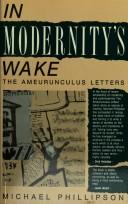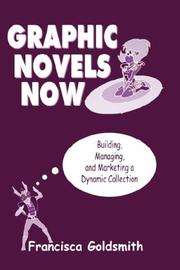| Listing 1 - 10 of 89 | << page >> |
Sort by
|
Book
Abstract | Keywords | Export | Availability | Bookmark
 Loading...
Loading...Choose an application
- Reference Manager
- EndNote
- RefWorks (Direct export to RefWorks)
Book
ISBN: 9074668070 Year: 1998 Publisher: Maarssen Umbra
Abstract | Keywords | Export | Availability | Bookmark
 Loading...
Loading...Choose an application
- Reference Manager
- EndNote
- RefWorks (Direct export to RefWorks)
Rimbaud, Arthur --- Art épistolaire --- Brieven [Fictieve ] --- Correspondance fictive --- Fictieve brieven --- Genre épistolaire --- Imaginary letters --- Lettres fictives --- Littérature épistolaire --- Épîtres
Book
ISBN: 3846765368 3770565363 Year: 2020 Publisher: Paderborn Brill | Fink
Abstract | Keywords | Export | Availability | Bookmark
 Loading...
Loading...Choose an application
- Reference Manager
- EndNote
- RefWorks (Direct export to RefWorks)
Wie wird Erinnerung an den Nationalsozialismus überliefert und neu konstruiert? Christoph Leitgebs Buch stellt diese Frage an das Gedächtnis von Literatur, ausgehend von Theorien des Unheimlichen. Ein Essay Sigmund Freuds steht am Anfang einer Tradition von vor allem französisch- und englischsprachigen Theorien, die das Konzept des »Unheimlichen« aus der Psychoanalyse in die Kulturwissenschaften übertragen. Dieses Buch zeigt Konsequenzen daraus für den Zusammenhang von Unheimlichem und Erinnerung. Exemplarische Analysen zu Autorinnen und Autoren wie Ilse Aichinger, Heimrad Bäcker, Thomas Harlan oder Josef Winkler stellen die Frage: Warum und wie wird Erinnerung an den Nationalsozialismus als »unheimlich« dargestellt, ausgehend von ganz unterschiedlichen biografischen Positionen?
Verdrängung --- Trauma --- Angst --- Dekonstruktion --- Fiktion --- Holocaust --- Lacan --- Psychoanalyse --- Sprechakttheorie --- Erinnerungsort --- Uncanny --- Austrian Literature --- Repression --- Anxiety --- Deconstruction --- Fictive --- Psychoanalysis --- Speech Act Theory
Book
ISBN: 9782874492471 2874492477 Year: 2015 Volume: *28 Publisher: Bruxelles: Les Impressions nouvelles,
Abstract | Keywords | Export | Availability | Bookmark
 Loading...
Loading...Choose an application
- Reference Manager
- EndNote
- RefWorks (Direct export to RefWorks)
Non-fiction --- Biofiction --- Biographie fictive --- Biographie imaginaire --- Biographies imaginaires --- Denkbeeldige biografie --- Fictieve biografie --- Fiction biographique --- Imaginary biography --- Biographical fiction --- Roman biographique --- History and criticism. --- Histoire et critique --- Roman biographique français --- Histoire et critique.

ISBN: 0415032326 Year: 1989 Publisher: London New York Routledge
Abstract | Keywords | Export | Availability | Bookmark
 Loading...
Loading...Choose an application
- Reference Manager
- EndNote
- RefWorks (Direct export to RefWorks)
Art --- anno 1900-1999 --- Art épistolaire --- Brieven [Fictieve ] --- Correspondance fictive --- Fictieve brieven --- Filosofie van het postmodernisme --- Genre épistolaire --- Imaginary letters --- Lettres fictives --- Littérature épistolaire --- Philosophie postmoderniste --- Postmodernism --- Postmodernisme --- Postmodernisme (esthétique) --- Postmodernisme (filosofie) --- Postmodernisme (philosophie) --- Épîtres --- Arts [Modern ] --- 20th century

ISBN: 0838998038 9780838998038 9780838909041 0838909043 Year: 2005 Publisher: Chicago : American Library Association,
Abstract | Keywords | Export | Availability | Bookmark
 Loading...
Loading...Choose an application
- Reference Manager
- EndNote
- RefWorks (Direct export to RefWorks)
In 1992, Maus, a graphic novel by Art Spiegelman, won the Pulitzer Prize. The genre has been growing ever since, appealing to the visual-oriented Gen-X and Gen-Y, as well as to reluctant readers, those of all ages seeking alternative viewpoints, and anyone willing to take both image and word into consideration. Graphic Novels Now helps librarians new to the genre with all the key issues related to these unique books. Expert author Francisca Goldsmith shares smart advice, from how to develop a well-rounded collection by finding reviews and reliable publishers and distributors to shelving, catal
Libraries --- Graphic novels --- Comic book novels --- Fiction graphic novels --- Fictive graphic novels --- Graphic albums --- Graphic fiction --- Graphic nonfiction --- Graphic novellas --- Nonfiction graphic novels --- Comic books, strips, etc. --- Fiction --- Popular literature --- Documentation --- Public institutions --- Librarians --- Special collections --- Graphic novels.
Book
ISBN: 144384358X 9781299658929 129965892X 9781443843584 1443840750 9781443840750 Year: 2012 Publisher: Newcastle upon Tyne : Cambridge Scholars,
Abstract | Keywords | Export | Availability | Bookmark
 Loading...
Loading...Choose an application
- Reference Manager
- EndNote
- RefWorks (Direct export to RefWorks)
When it comes to recounting history, issues arise as to whose stories are told and how reliable is the telling. This collection of fourteen essays explores the unique ways in which graphic novels can aid us in addressing those issues while shedding new light on a variety of texts, including those by canonical North American and European writers Art Spiegelman (Maus, In the Shadow of No Towers), Alan Moore (From Hell, The League of Extraordinary Gentlemen), Frank Miller (The Dark Knight Return...
Graphic novels. --- Graphic novels --- Comic book novels --- Fiction graphic novels --- Fictive graphic novels --- Graphic albums --- Graphic fiction --- Graphic nonfiction --- Graphic novellas --- Nonfiction graphic novels --- Comic books, strips, etc. --- Fiction --- Popular literature --- History and criticism.
Book
ISBN: 0271086300 9780271086323 9780271086309 0271086327 9780271084749 027108474X 9780271084756 0271084758 Year: 2019 Publisher: University Park, Pennsylvania : The Pennsylvania State University Press,
Abstract | Keywords | Export | Availability | Bookmark
 Loading...
Loading...Choose an application
- Reference Manager
- EndNote
- RefWorks (Direct export to RefWorks)
"Explores how superhero comics, with their creative fusions of fantasy and realism, provide a flexible visual form for engaging issues of disability and intersectional identity (race, class, gender, sexuality) as well as for imagining and valuing different physical and cognitive ways of being in the world"--Provided by publisher.
Graphic novels --- Comic book novels --- Fiction graphic novels --- Fictive graphic novels --- Graphic albums --- Graphic fiction --- Graphic nonfiction --- Graphic novellas --- Nonfiction graphic novels --- Comic books, strips, etc. --- Fiction --- Popular literature --- History and criticism.
Book
ISBN: 1009182943 1009192515 1009182935 1009192523 Year: 2023 Publisher: Cambridge, United Kingdom ; New York, NY : Cambridge University Press,
Abstract | Keywords | Export | Availability | Bookmark
 Loading...
Loading...Choose an application
- Reference Manager
- EndNote
- RefWorks (Direct export to RefWorks)
Bringing digital humanities methods to the study of comics, this monograph traces the emergence of the graphic novel at the intersection of popular and literary culture. Based on a representative corpus of over 250 graphic novels from the United States, Canada, and Great Britain, it shows how the genre has built on the visual style of comics while adopting selected features of the contemporary novel. This argument positions the graphic novel as a crucial case study for our understanding of twenty-first-century culture. More than simply a niche format, graphic novels demonstrate how contemporary literature reworks elements of genre narrative, reconfiguring rather than abolishing distinctions between high and low. The book also puts forward a new historical periodization for the graphic novel, centered on integration into the literary marketplace and leading to an explosive growth in page length and a diversification of aesthetic styles.
Graphic novels --- Comic books, strips, etc. --- History and criticism. --- Comic book novels --- Fiction graphic novels --- Fictive graphic novels --- Graphic albums --- Graphic fiction --- Graphic nonfiction --- Graphic novellas --- Nonfiction graphic novels --- Fiction --- Popular literature
Book
ISBN: 1009250957 1009250922 1009250949 1009250930 9781009250948 Year: 2023 Publisher: Cambridge, United Kingdom ; New York, NY : Cambridge University Press,
Abstract | Keywords | Export | Availability | Bookmark
 Loading...
Loading...Choose an application
- Reference Manager
- EndNote
- RefWorks (Direct export to RefWorks)
Following Art Spiegelman's declaration that 'the future of comics is in the past,' this book considers comics memory in the contemporary North American graphic novel. Cartoonists such as Chris Ware, Seth, Charles Burns, Daniel Clowes, and others have not only produced some of the most important graphic novels, they have also turned to the history of comics as a common visual heritage to pass on to new readers. This book is a full-length study of contemporary cartoonists when they are at work as historians: it offers a detailed description of how they draw from the archives of comics history, examining the different gestures of collecting, curating, reprinting, forging, swiping, and undrawing that give shape to their engagement with the past. In recognizing these different acts of transmission, this book argues for a material and vernacular history of how comics are remembered, shared, and recirculated over time.
Graphic novels --- Comic books, strips, etc. --- History and criticism. --- Comic book novels --- Fiction graphic novels --- Fictive graphic novels --- Graphic albums --- Graphic fiction --- Graphic nonfiction --- Graphic novellas --- Nonfiction graphic novels --- Fiction --- Popular literature
| Listing 1 - 10 of 89 | << page >> |
Sort by
|

 Search
Search Feedback
Feedback About UniCat
About UniCat  Help
Help News
News